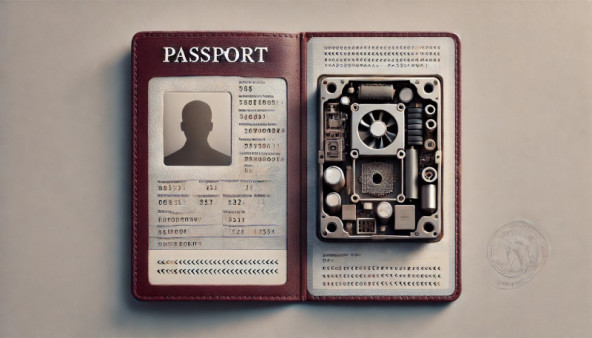Product Compliance: Der Digitale Produktpass

Die EU führt mit der Ökodesign-Verordnung (Verordnung (EU) 2024/1781) einen digitalen Produktpass ein. Dieser soll den Wirtschaftsteilnehmern entlang der Wertschöpfungskette bis hin zum Verbraucher einen schnellen und unkomplizierten Zugriff auf relevante Informationen über die Produkte ermöglichen. Die Verordnung ist seit dem 18.07.2024 in Kraft und Teil des sogenannten European Green Deals. Sie löst die Ökodesign-Richtlinie (Richtlinie (EU) 2009/125/EG) ab und gilt unmittelbar, wobei mit konkreten Umsetzungspflichten ab 19.07.2025 zu rechnen ist.
Inhalt des digitalen Produktpasses
Laut Ökodesign-Verordnung handelt es sich bei dem Digitalen Produktpass (auch „DPP“) um einen produktspezifischen Datensatz mit den für das jeweilige Produkt relevanten Informationen, der elektronisch über einen Datenträger abrufbar ist. Der Digitale Produktpass soll beispielsweise über einen QR-Code oder ein Wasserzeichen am oder auf dem Produkt selbst leicht zugänglich sein. Die genauen Inhalte des digitalen Produktpasses sind abhängig vom Produkt und dessen Produktgruppe. Beispielsweise soll er folgende Informationen enthalten: die Produktkennung, Konformitätserklärungen, Benutzerhandbücher sowie Informationen über den Hersteller. Diese Informationen sollen während des gesamten Produktlebenszyklus zur Verfügung stehen. Die genauen Anforderungen an die Inhalte werden durch die Europäische Kommission in sog. „delegierten Rechtsakten“ festgelegt, die gegenwärtig noch nicht vorliegen.
Sachlicher Anwendungsbereich: Erfasste Produkte
Der Digitale Produktpass gilt für alle physischen Waren, die in Verkehr gebracht oder in Betrieb genommen werden. Dies schließt auch Bauteile und Zwischenprodukte mit ein. Ausgenommen sind u. a. Lebensmittel, Futtermittel, Arzneimittel sowie lebende Organismen. Medizinprodukte sind hingegen grundsätzlich von der Regelung erfasst, wobei sich eine eingeschränkte Anwendbarkeit noch aus den delegierten Rechtsakten ergeben könnte. Die Ökodesign-Verordnung enthält als Rahmenrechtsakt selbst keine Liste der konkret erfassten Produkte, sondern überträgt diese Aufgabe der Kommission.
Persönliche Anwendungsbereich: Betroffene Unternehmen
Von den neuen Verpflichtungen erfasst sind alle Wirtschaftsteilnehmer, die in die Wertschöpfungskette des jeweiligen Produkts involviert sind. Daher sind neben den Herstellern auch Bevollmächtigte, Importeure, Händler sowie Fulfillment-Dienstleister betroffen.
Zeitlicher Anwendungsbereich: Umsetzungsfrist
Grundsätzlich löst die Ökodesign-Verordnung sofort mit Wirkung vom 18. Juli 2024 die Ökodesign Richtlinie ab. Wie bereits dargestellt ist jedoch sowohl der Anwendungsbereich als auch der Inhalt des digitalen Produktpasses davon abhängig, was die Europäische Kommission in den delegierten Rechtsakten regelt. Der erstedelegierte Rechtsakt, der auf der Ökodesign-Verordnung basiert, wird gemäß Art. 4 Abs. 7 der Ökodesign-Verordnung frühestens am 19. Juli 2025 in Kraft treten. Für die Wirtschaftsteilnehmer besteht dann grundsätzlich mindestens ein Übergangszeitraum von 18 Monaten ab Inkrafttreten des jeweiligen delegierten Rechtsaktes, um die Ökodesign-Anforderungen und damit die Anforderungen an den digitalen Produktpass zu erfüllen. In Ausnahmefällen kann hiervon abgewichen werden.
Wer hat den Digitalen Produktpass umzusetzen?
Hersteller sind verpflichtet, sicherzustellen, dass Produkte, die gemäß der delegierten Rechtsakte in Verkehr gebracht oder in Betrieb genommen werden, mit einem digitalen Produktpass ausgestattet sind, der den inhaltlichen Anforderungen entspricht und von einem unabhängigen Digitalprodukt-Drittdienstleister gespeichert wird. Diese Regelung gilt auch für Importeure. Für Händler gilt: Der digitale Produktpass muss für Kunden und potenzielle Kunden leicht zugänglich sein – auch im Online-Handel.
Ausblick: Zusätzlicher Dokumentationsaufwand oder Vereinfachung durch Digitalisierung?
Erst die zukünftigen delegierten Rechtsakte werden zeigen, ob der digitale Produktpass Fluch oder Segen ist. Denkbar ist es einerseits, dass im negativen Sinne schlicht zusätzlicher Dokumentationsaufwand für die Wirtschaftsakteure entsteht. Dies insbesondere, wenn zukünftig analoge und digitale Kennzeichnungs- und Informationspflichten nebeneinander gelten sollten – also z. B. ein zusätzlich mit dem Produkt mitzulieferndes Benutzerhandbuch, das zusätzlich über den Digitalen Produktpass zugänglich gemacht werden muss. Zugleich ist bislang einigermaßen offen, wie alle Akteure der Lieferkette gleichermaßen niedrigschwellig einbezogen werden können, damit eine ordnungsgemäße Bereitstellung der Informationen „durch die Lieferkette“ gelingt.
Bei einer gelungener Umsetzung bietet der digitale Produktpass jedoch vor allem eine Chance zur längst überfälligen medienbruchfreien Digitalisierung: Sämtliche Informationen könnten ggf. gebündelt und an einem einzigen Ort zur Verfügung gestellt werden und dadurch umfangreiche Hinweise am Produkt selbst unterbleiben. Dass die Europäischen Union diesen Wunsch der Wirtschaftsakteure grundsätzlich erkannt hat, zeigte sich zuletzt auch im Entwurf zur neuen Maschinenverordnung, der erstmals eine „digitale Bedienungsanleitung“ vorsieht.
Fazit
Die Verordnung lässt vorerst wichtige Details offen, zum Beispiel: Für welche Produktgruppen muss der digitale Produktpass welche Informationen genau bereithalten? Können wir davon ausgehen, dass alle Beteiligten eines Endprodukts auf den digitalen Produktpass zugreifen können und eine Schreibberechtigung bekommen? Wird der digitale Produktpass zukünftig als gemeinsame Fundstelle für sämtliche gesetzlichen Kennzeichnungspflichten dienen? Zur Beantwortung dieser Fragen muss auf die Ausfertigung der delegierten Rechtsakte der Europäischen Kommission gewartet werden. Dennoch kann der digitale Produktpass für Hersteller auch die Chance sein, dass sie zukünftig Informationspflichten gebündelt bereitstellen können. Ob sich der digitale Produktpass in diese Richtung entwickelt, bleibt jedoch abzuwarten.
Gerne unterstützen wir Sie bei der Identifikation und Umsetzung gesetzlicher Pflichten zur Produktkennzeichnung und Produktsicherheit.
